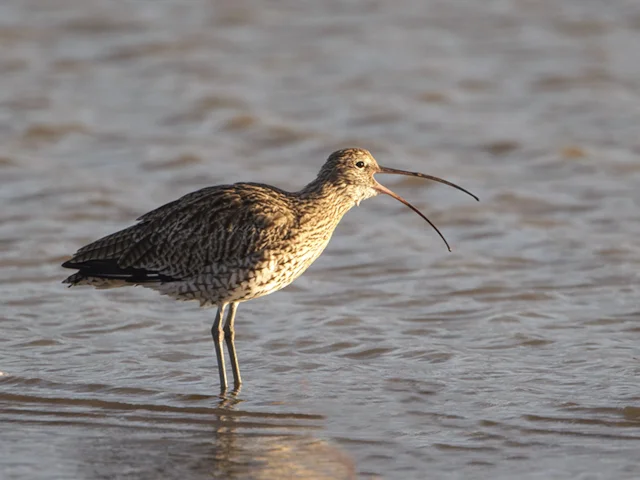Threatened curlews make a comeback at Co Antrim farm

For the first time in 20 years, Eurasian Curlew chicks have successfully fledged at Greenmount Hill Farm in Glenwherry, Co Antrim, RSPB NI has announced.
The birds tried to breed at the farm last year – the first such attempt since 2005 – but the eggs failed to hatch. Two pairs arrived back at the farm this year, and RSPB NI Conservation Advisor Neal Warnock has confirmed that one of these successfully fledged three young. It is thought that these are the first curlews to fledge from the site since the 1990s.
Eurasian Curlew numbers in the UK have almost halved in the past two decades, while in Northern Ireland, more than 80 per cent of curlew population has been lost since 1987. The species is Red-listed as a Bird of Conservation Concern.
Since 2009, RSPB NI, the Irish Grouse Conservation Trust (IGCT), the College of Agriculture, Food and Rural Enterprise (CAFRE) and other partners have been working as part of the Glenwherry Hill Regeneration Project (GHRP) on an integrated management approach in the area in a bid to improve the habitat for wildlife.

This juvenile bird is one of three to fledge from Greenmount Hill Farm, Glenwherry, Co Antrim. Photo by Neal Warnock (www.rspb-images.com).
“When news broke that one of the pairs had hatched three young, their progress became the talk of the community,” commented Neal Warnock. “It was a very long six-week wait watching them grow until they finally stretched their wings and departed. Curlews only rarely fledge three young, so this was terrific news for all involved in the project and should help see them become established on the farm.”
Graeme Campbell, CAFRE’s GHRP Project Manager, added, “We are delighted with this year’s curlew success and that the work to attract breeding waders over the last six years has also resulted in increasing numbers of snipe breeding on the farm.”

